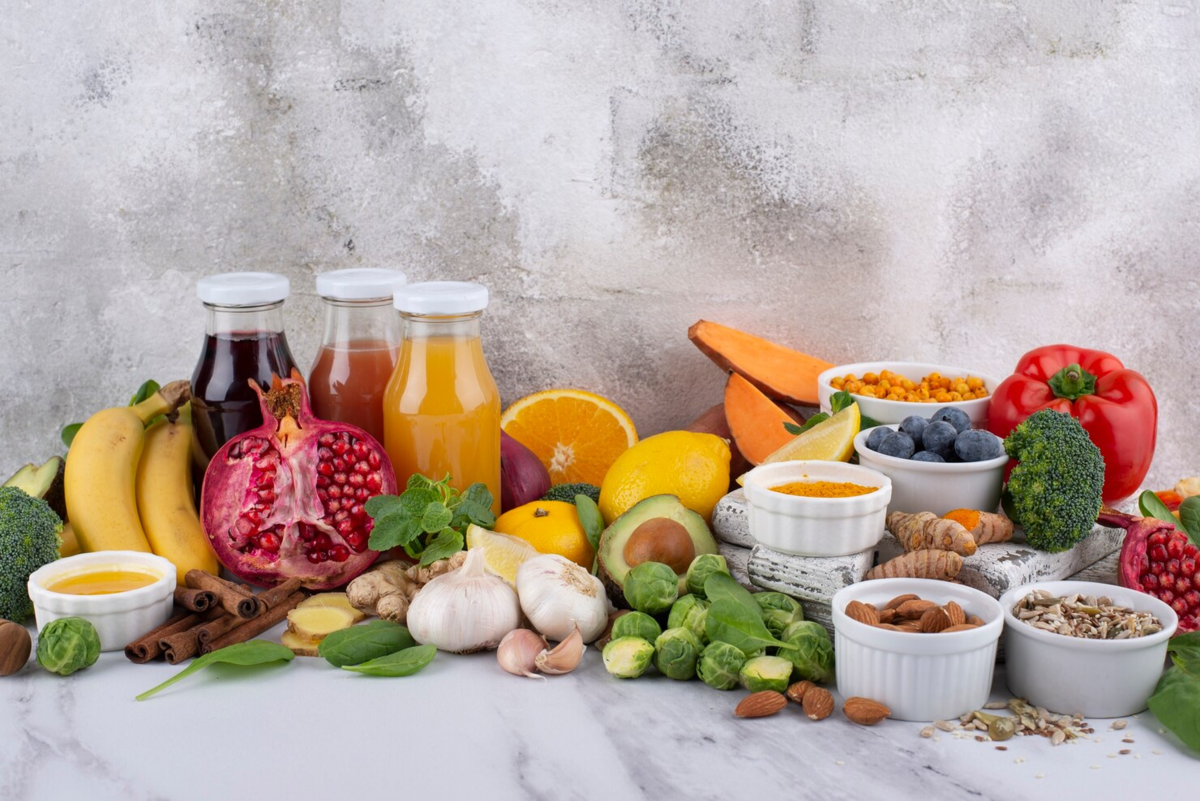A legacy of innovation, quality, and culinary experience.
Read our NewsletterExplore the different types of headaches and discover 10 scientifically-backed foods and drinks that may help relieve them naturally. Learn what works, why, and how to make smart dietary choices for pain relief.
Headaches are one of the most common medical complaints worldwide, affecting people of all ages, lifestyles, and health backgrounds. Whether it’s the occasional tension headache or the debilitating throbs of a migraine, understanding the type of headache you're experiencing—and how to manage it—can make a world of difference in your quality of life.
While medications can provide fast relief, many individuals seek natural and nutritional ways to prevent or ease headaches. In fact, what you eat (or don’t eat) plays a crucial role. This blog will guide you through the most common types of headaches and introduce 10 foods and Beverages that may help naturally soothe the pain.
Headaches are classified into two broad categories: primary and secondary. Primary headaches are not symptoms of another condition, whereas secondary headaches stem from an underlying health issue, such as an infection, injury, or sinus congestion.
These are the most frequent types, often described as a dull, aching pain across the forehead or the back of the head and neck. Stress, fatigue, and poor posture are usual culprits.
Migraines are intense, throbbing headaches typically on one side of the head, often accompanied by nausea, sensitivity to light or sound, and visual disturbances (auras). They can last from a few hours to several days.
Rare but severe, these involve intense pain around one eye and occur in cyclical patterns or “clusters.” They often strike suddenly and are more common in men.
These result from inflamed sinuses, often due to allergies or infections. The pain is typically centered around the cheeks, forehead, or eyes and may worsen with movement.
These happen from overusing headache medications. When the medication wears off, pain returns—sometimes worse than before.
For regular caffeine users, missing your daily cup can cause withdrawal, leading to a throbbing headache and fatigue.

While diet isn’t a cure-all, some foods contain compounds that may reduce headache frequency or intensity by relaxing blood vessels, reducing inflammation, or improving hydration.
Best for: Tension and dehydration-induced headaches
Dehydration is a major headache trigger. Water-rich Vegetables & Fruits, such as watermelon, cucumber, and strawberries, can help restore fluid balance and provide a hydrating, headache-soothing snack.
Tip: Combine watermelon with a pinch of salt and mint for a refreshing hydration boost.
Best for: Migraines and nausea
Ginger contains anti-inflammatory and anti-nausea properties, making it highly effective in reducing migraine symptoms. A warm ginger tea can ease stomach upset and promote relaxation.
Use Case: Drink ginger tea at the onset of migraine symptoms for best results.
Best for: Migraines and inflammation-based headaches
Tuna and other oily fish (salmon, mackerel, sardines) are high in omega-3 fatty acids that help lower inflammation, a known migraine trigger.
Note: Fresh, wild-caught Tuna is the ideal choice. Avoid canned varieties that are high in sodium or contain preservatives.
Best for: Migraines and menstrual headaches
Low magnesium levels are linked to migraines. Leafy greens, avocados, almonds, and legumes are excellent sources.
Cooking Solutions: Add steamed spinach or sautéed kale to your lunch or dinner to easily boost magnesium.
Best for: Tension headaches
Almonds are rich in salicin, a natural pain reliever also found in aspirin. They can serve as a gentle, natural way to manage headaches.
Quick Tip: Carry a small almond pack for on-the-go snack-time relief.
Best for: Caffeine withdrawal or tension headaches
Rich in calcium, Dairy products like yogurt can help stabilize blood pressure and muscle function. Low calcium levels may trigger headaches.
Bonus: Add berries and a drizzle of honey for a satisfying, pain-fighting breakfast.
Best for: Caffeine withdrawal and sinus headaches
Caffeine narrows blood vessels, which can reduce headache pain. But overdoing it can backfire, causing rebound headaches. A small cup may help—especially when combined with painkillers.
Note: Stick to no more than one 8-oz cup if using it as a remedy.
Best for: Hangover or low blood sugar-related headaches
Bananas provide quick-release carbs and potassium, helping to rebalance electrolytes and blood sugar levels—two common triggers of headaches.
Try this: Blend a banana with yogurt and a handful of spinach for a headache-fighting smoothie.
Best for: Stress-related or tension headaches
High in magnesium and antioxidants, dark chocolate can help calm your nervous system and may even trigger the release of endorphins, which act as a natural painkiller.
Note: Eat small portions—overconsumption of sugar may worsen headaches.
Best for: Sinus and tension headaches
Peppermint has soothing effects, particularly when used as an essential oil. It can relax muscles and open sinuses.
Vending Solutions: Consider stocking peppermint tea in office Vending Solutions to help staff manage stress and minor health issues naturally.

While some foods relieve headaches, others may trigger them:
Aged cheeses (contain tyramine)
Processed meats (nitrates and nitrites)
Artificial sweeteners (like aspartame)
Alcohol (especially red wine)
Monosodium glutamate (MSG) in take-out or packaged meals
Highly salted Condiments and sauces
Avoiding such triggers is a helpful strategy, especially for chronic headache sufferers.
Skipping meals or eating irregularly can lead to low blood sugar, a common trigger for headaches.
Drink at least 8 cups of water daily, more if you’re active or live in a hot climate.
Track when headaches occur, their intensity, and what you’ve eaten to identify personal dietary triggers.
Poor sleep is linked to more frequent and severe headaches. Aim for 7–9 hours each night.
Practice mindfulness, yoga, or light physical activity regularly to lower stress, a major contributor to tension headaches.
Understanding the types of headaches you experience is the first step toward effective and natural relief. While over-the-counter medication can be beneficial, your diet plays a significant role in both preventing and managing pain. Incorporating anti-inflammatory, magnesium-rich, and hydrating foods can make a tangible difference. Similarly, avoiding known triggers and maintaining a healthy lifestyle can significantly reduce headache frequency and severity.
Whether it’s a handful of almonds, a glass of water, or a soothing cup of ginger tea, your kitchen may hold the key to relief. Stay informed, stay nourished, and always listen to your body. At GoogyCS, we’re committed to sharing smart, accessible wellness insights that help people feel their best, naturally.